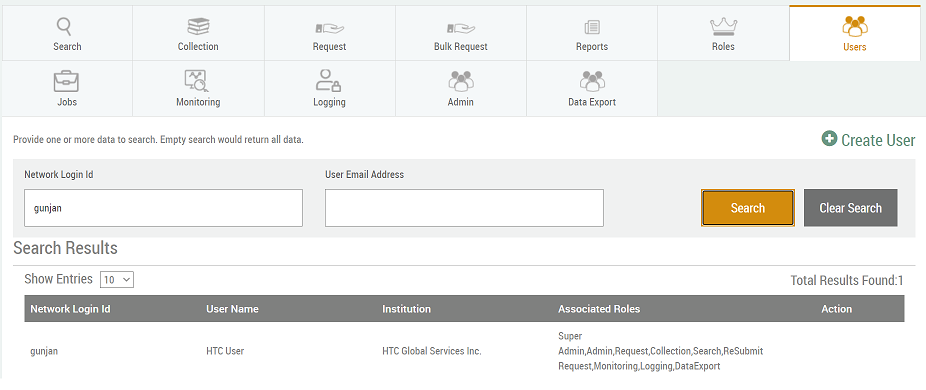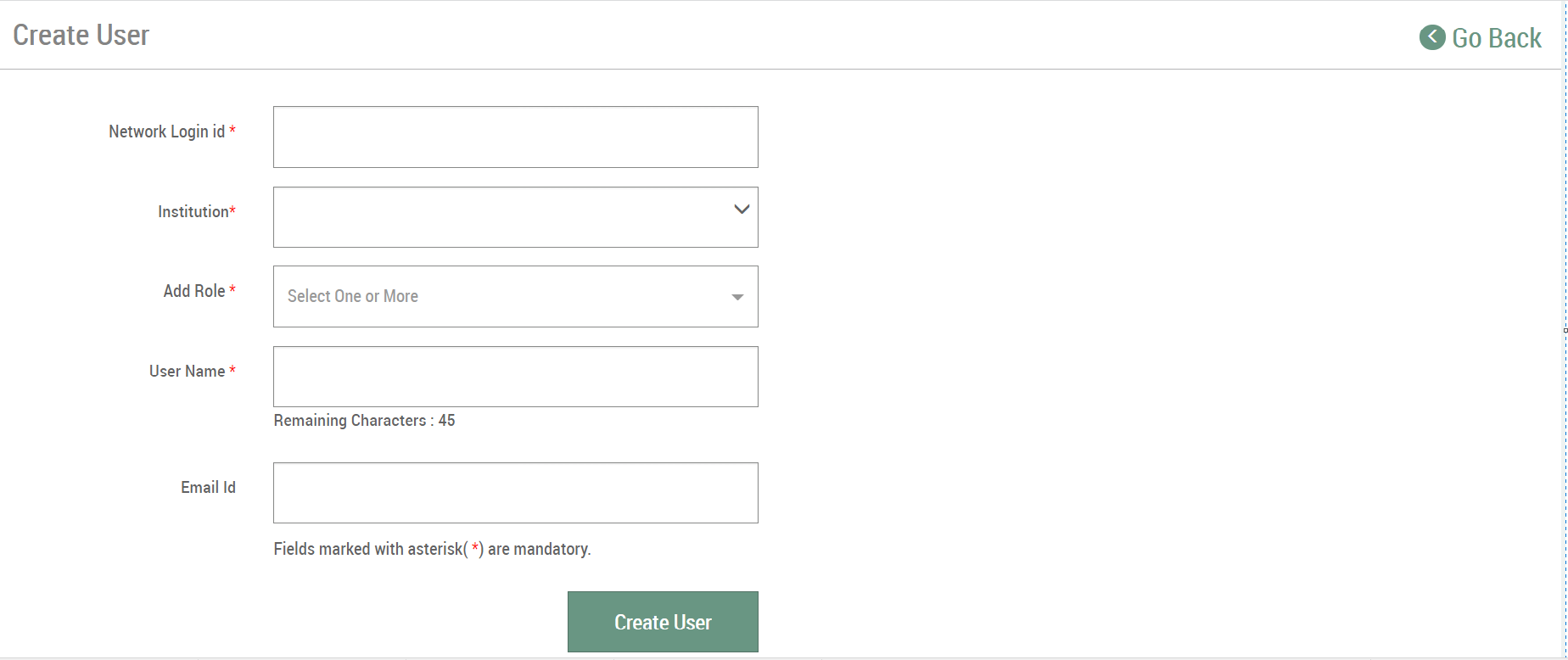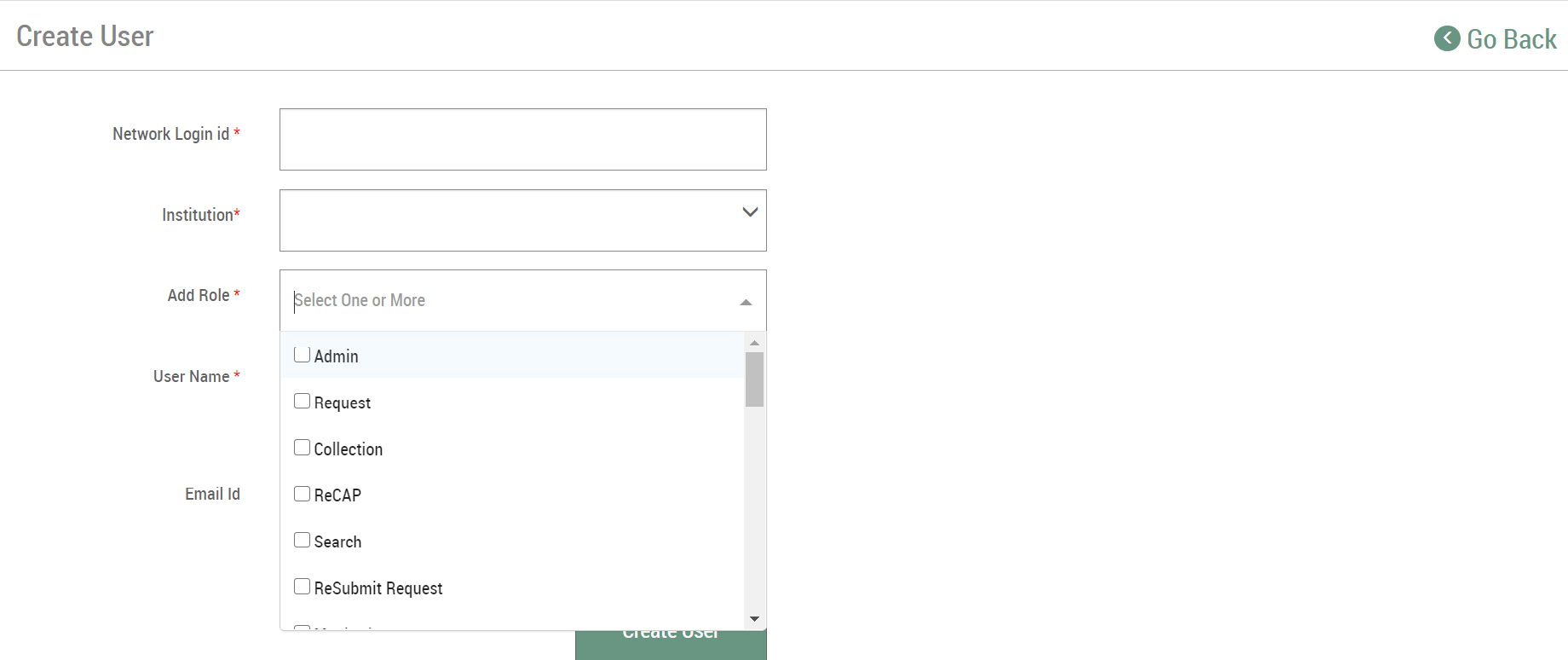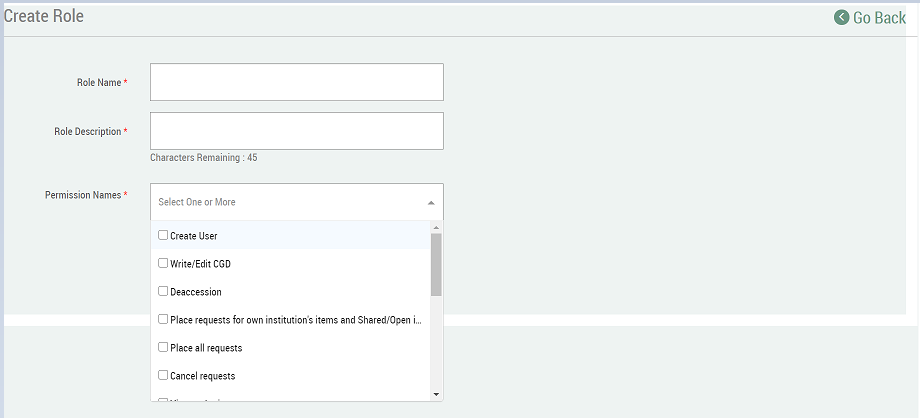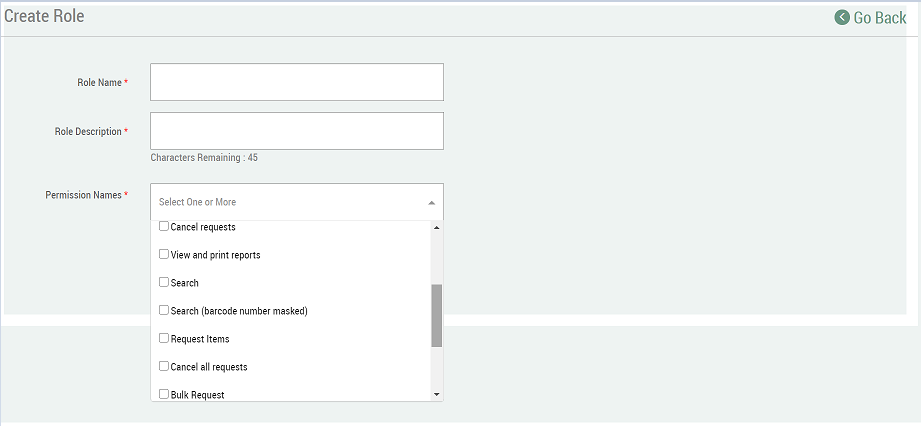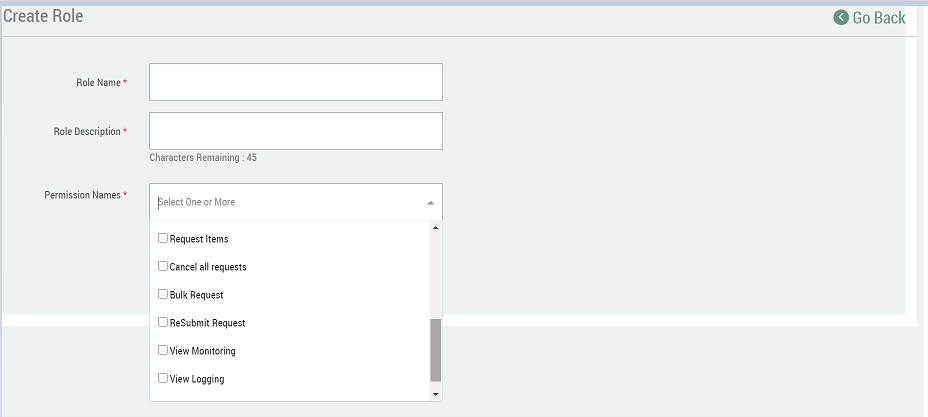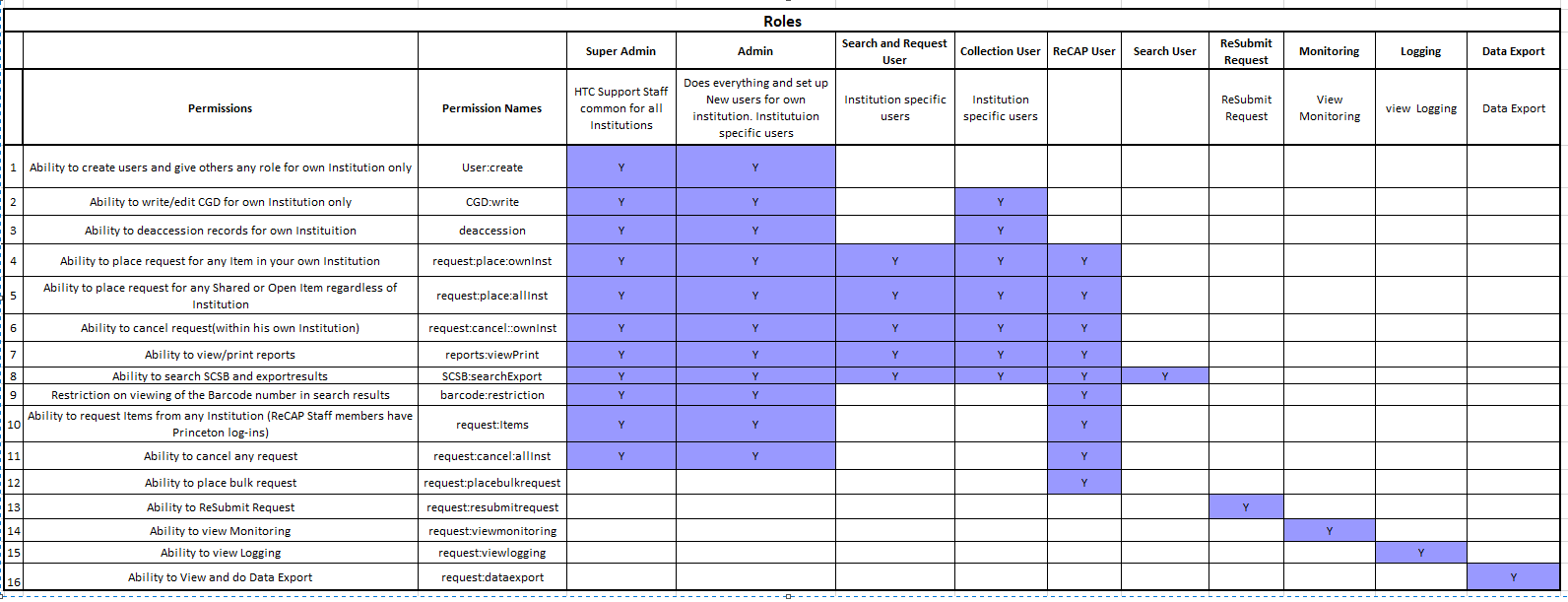User Management (Users and Roles)
Authorization
SCSB allows users to be managed through the Users and Roles tab. These tabs are protected and are accessible only to the Administrators of the partner institutions. Apart from Users and Roles, SCSB also has a collection of Permissions which are the basic building block of the Authorization module.
Princeton users, contact: for users and roles, wange@princeton.edu
Princeton users, for technical issues, mzelesky@princeton.edu
Columbia users, contact: recap.admin@library.columbia.edu
NYPL users, contact: ReCAPinterface@nypl.org
The permissions allow access or blocks a certain page or functionality. One or more permissions can be clubbed together under a Role and the Role can be assigned to one or more Users. Post Authentication, the system retrieves the roles for the logged in user and from those roles retrieves the permissions and depending on those permission allows access to the application.
Users
On clicking the Users tab, the user is presented with a search interface to retrieve all the active users in the SCSB system, similar to the Roles tab. The results are in a table with the Network Login Id, Institution, Add Role and an action column, where, similar to the Roles tab, the user can be edited or deleted.
In the Create User page, accessed from the link on the top right corner under the Users tab, the user is presented with a form to fill in new user details such as Network Login Id, Institution, Add Role, User Name and Email Id. The Email id is an optional field. The User Description field can be leveraged to better describe the User. This could include the user's name and/or a detailed job description. A maximum of 45 characters (including spaces) is allowed to be entered in this field.
In the Create User page, Add Role is a dropdown which will have all values from the Roles table. On hovering the mouse over the role names, a tooltip shows the Permission names associated with the role. The Edit icon in the search results can be invoked to edit an existing user. It opens the information in the create user screen to enable editing of data. The delete icon opens the user information in a create user like screen with all fields made non-editable with a delete button.
It must be noted that even if the user is an 'Admin', he/she will not be allowed to view or edit their own user information. This is to prevent users from assigning themselves extra permissions such as to edit CGD or deaccession items or make themselves admins of other institutions giving themselves power over items of other institutions.
Roles
The Roles tab is restricted only to HTC users and will be used for maintenance purpose.
On clicking the Roles tab, the user is presented with a search interface to retrieve all active roles in the system. The user can search either using the Role Name or the Permission Name or both. The Search button executed the search and Clear Search button reset the text fields and results.
The search results displays the results in a table form with the Role Name, Role Description, Permission Names and icons to Edit or Delete the Role. On the top right corner of the Roles tab page, the Create Role link is found. This is used to create a new role in SCSB.
In the Create Role page, the user is presented with a form to fill in the new Role’s details such as the Role Name, Role Description and the Permission Names. The Permission Names field is a drop down with multiple permission values where one or more permissions can be selected through the checkboxes. The Edit icon in the search results can be invoked to edit an existing role. It opens the information in the create role screen to enable editing of data. The delete icon opens the role information in a create role like screen with all fields made non-editable with a delete button.
The below image shows the relationship between Roles and its associated Permissions.
